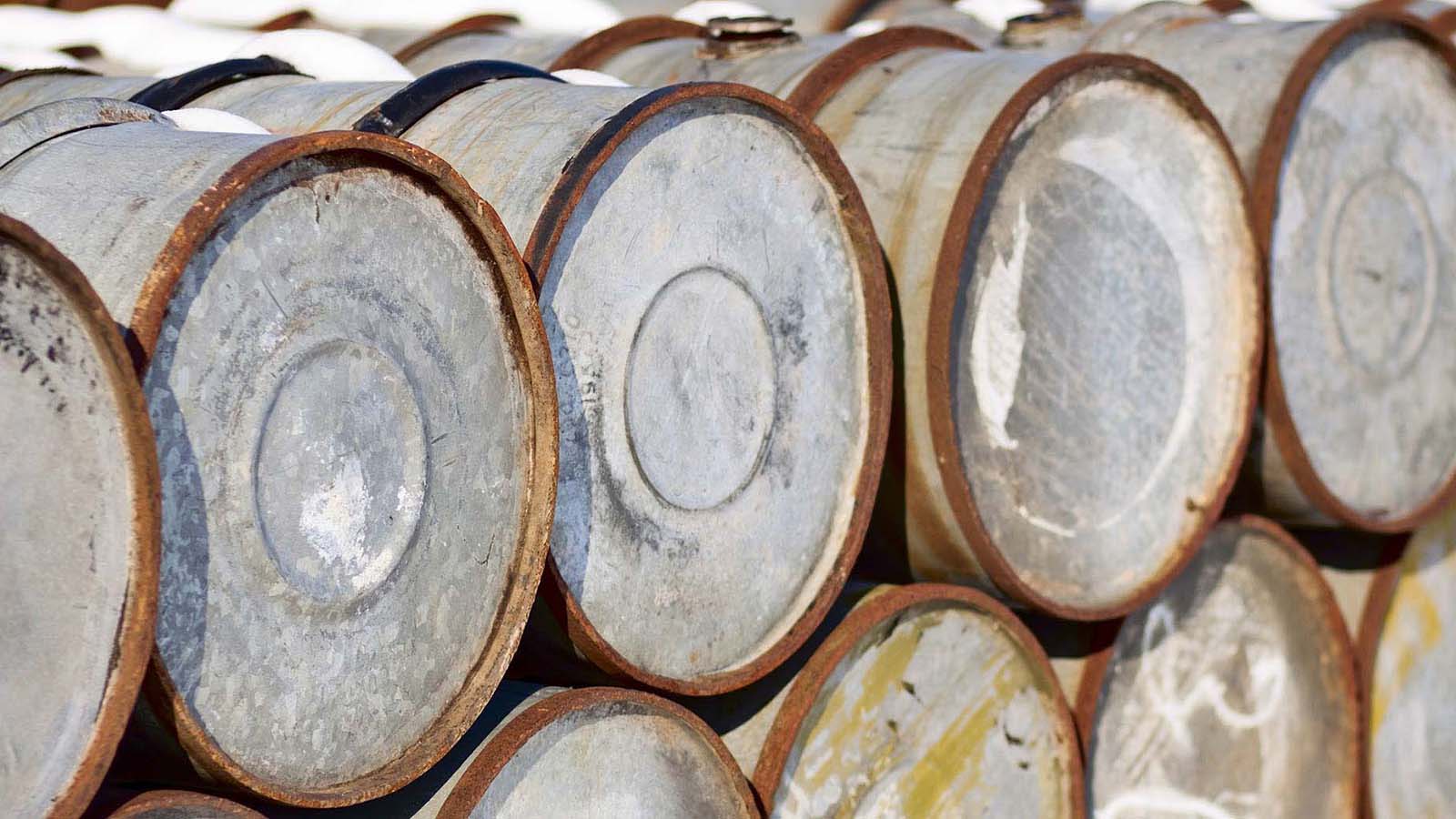IRS Issues Proposed Regulation on Application of Chemical Superfund Tax
Never miss a thing.
Sign up to receive our insights newsletter.

The Internal Revenue Service (IRS) issued proposed regulations on the application of the federal Superfund Tax that address a number of issues surrounding the imposition of the tax. The Infrastructure Investment and Jobs Act of 2021 reinstated IRC Section 4661, which imposes a per-ton tax on the sale of the chemicals listed in the section by a manufacturer, producer, or importer of the chemicals. The proposed regulations provide the initial guidance on the reinstated tax.
The issues addressed in the proposed regulations include who is liable for the payment, what chemicals are taxable, and how to calculate the tax. The regulations also request input from taxpayers on how to address imports and questions of foreign competitive advantage. Comments are due by May 30, 2023. The IRS also issued Notice 2023-8, which extends the temporary penalty suspension, and Revenue Procedure 2023-20, which extends the date on which a substance that is added to the taxable substance list is deemed to be a taxable substance.
Imposition of Tax – Time, Measurement and Taxpayer
The proposed regulations state that the Section 4661 tax is imposed on the first sale or use of a taxable chemical. For imported taxable chemicals, this means that the tax is not imposed at the time of import but is imposed on the first sale or use in the United States. Chemicals that are entered into a free trade zone (FTZ) are taxable, but goods that enter the United States under a transportation and export bond are not.
The tax is paid by the importer or manufacturer. Where there is a tolling agreement in effect, the manufacturer, rather than the company performing the manufacturing process under the contract agreement, is the person that owns the product.
The tax is measured by tons; the proposed regulations provide formulas for weight conversion. The weight for the purposes of calculating the tax is the actual weight at the time of use or sale. When there are multiple chemicals in a chemical mixture, the tax is imposed on the actual weight of each taxable chemical in the mixture calculated separately with the applicable rate for that taxable chemical.
What Chemicals Are Taxable – Isomers, Intermediate Streams, Mixtures and Compounds
The regulations provide the names of the taxable chemicals in Section 4661 along with a table of their molecular composition. The regulations provide that isomers of all taxable chemicals – with the exception of xylene – are also taxable.
When it comes to mixing taxable chemicals, the regulations state that dilution is not considered manufacturing. As a result, dilution of a previously taxed chemical does not trigger a second tax.
Taxable chemicals do not lose their identity when they are in a chemical mixture, but they do lose their identity when they are in a chemical compound.
A manufacturer who uses a tax-paid chemical in a manufacturing process that produces a second taxable chemical may claim a credit for the tax-paid on the feedstock chemical and will pay a tax on the sale or use of the second chemical. The regulations provide allocation examples when a tax-paid chemical is used to produce multiple other chemicals.
Taxable chemicals in an intermediate hydrocarbon stream that may be sold tax free when sold between Form 637 “G” registrants lose their tax exempt status when isolated from the hydrocarbon stream. The one exception is butane, which is not taxed until used other than in blending into motor fuel.
Imported Mixtures and Compounds – Foreign Competitive Advantage
The IRS recognizes that taxable chemicals found in an imported chemical mixture could completely escape the Section 4661 tax unless the importer engages in a manufacturing process of separating the taxable chemicals in the mixture and then sells or uses those taxable chemicals. To address this disparity, the proposed regulations provide that when a taxable chemical is part of an imported chemical mixture that is not a taxable substance, the tax attaches to the first sale or use of the chemical mixture by the importer. The tax is imposed on the actual weight of any taxable chemicals in the chemical mixture at the time the importer first sells or uses the chemical mixture. These rules ensure that foreign and domestic manufacturers of chemical mixtures are treated the same.
The IRS recognizes that taxable chemicals found in an imported chemical compound could also escape the Section 4661 tax because taxable chemicals in chemical compounds lose their identity. The IRS cannot therefore tax the taxable chemicals used in the production of imported chemical compounds. This creates an advantage for foreign manufacturers of chemical compounds that are produced with taxable chemicals but that are not taxable substances for purposes of the Superfund Tax. The IRS seeks comments on how to mitigate this disparity.
Chemicals Used in Motor Fuel Blending
Methane and butane that are used other than in motor fuel blending are taxed at the time they are so used. This means sales of methane and butane may occur tax free between wholesalers and distributors.
Exemptions and Exemption Certificates
The regulations include model certificates to be provided by Form 637 “G” registrants in connection with tax-free sales and purchases of intermediate hydrocarbon streams and inventory exchanges. Note that by statute, both the purchaser and seller must be “G” registrants for the transaction to occur tax free, and the tax travels with the product once it attaches.
The regulations also include model certificates to be used for qualified use exemptions such as motor fuel blending or fertilizer. For both of these exemptions, the tax will be imposed and a credit or refund will be available to the end-user of the chemical unless a certificate stating the chemical will be resold for an exempt use is provided to the importer or manufacturer and then to each subsequent seller.
There is an exemption certificate and guidance with respect to exports. A manufacturer may sell a taxable chemical tax free for export provided the buyer or the buyer’s customer is the exporter. If there are more than two sales prior to export, then the first sale is taxable. With respect to the export exemption, the exporter is the shipper or consignee listed on the bill of lading. Proof of export and an export certificate is required to support the exemption. Where the tax has been paid on a chemical that is exported, the manufacturer is entitled to claim a credit or refund. The exporter of the chemical may claim a credit or refund if the manufacturer waives its right to do so.
Tax free sales of an otherwise imported taxable substance are permitted if all the chemicals in the substance would be exempt under an applicable exemption in Section 4661 and an exemption certificate is provided.
Additional Guidance – IRS Notice 2023-28 and Rev. Proc. 2023-20
In addition to the proposed regulations, the IRS also issued Notice 2023-28, which extends the temporary suspension of penalties for failure to deposit chemical superfund taxes. The underpayment and failure to deposit penalties will now be waived for the remaining quarters of 2023. In addition, a taxpayer’s ability to use the deposit safe harbor rule will not be withdrawn with respect to the Superfund tax prior to the third quarter of 2024.
There is also some new guidance with respect to the date on which a new substance is deemed added to the taxable substance list. Under Rev. Proc. 2023-20, which amends Rev. Proc. 2022-26, petitions submitted by an importer or exporter received after December 31, 2022 will be deemed to have been filed on the first day of the calendar quarter during which the petition was received. The time for the Secretary to make a determination will begin to run on the date the petition is accepted by the IRS. Once a substance is added to the taxable substance list, for the purposes of export refund claims, that substance is deemed to have been added to the list as of (i) the first day of the calendar quarter during which the petition is filed (in the case of a petition submitted by an interested person), or (ii) the day on which the petition is deemed filed in accordance with the revenue procedure (in the case of a petition submitted by an importer or exporter).
For more information about the proposed regulations, contact us. We are here to help.
© 2023
